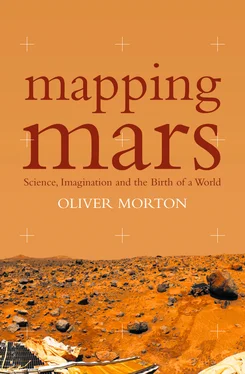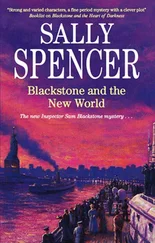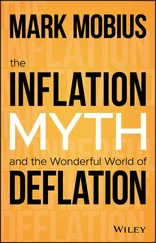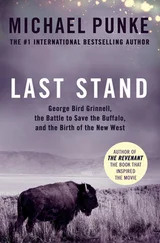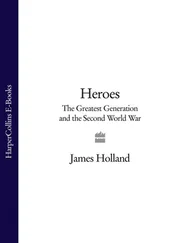By the time he came to Meteor Crater in 1891 Gilbert had spent twenty years, as he put it, ‘aboard the occidental mule’, trying to understand the processes that had shaped the landscapes around him. He was a precise man, mathematically orientated, but he also had a zest for the experiences that would help him explain how the landscapes he carefully measured had come to be. It was, he wrote, ‘the natural and legitimate ambition of a properly constituted geologist to see a glacier, witness an eruption and feel an earthquake’. When he achieved the last of those ambitions in 1906, it was with ‘unalloyed pleasure’; woken by the shocks of the San Francisco earthquake he set to timing them and measuring their direction. He brought the same precision to his other work, closely harnessed to a love of physical and mechanical analogy.
His love for the orderly and mathematically tractable led him to study the stars as well as the earth. Travelling down the Grand Canyon on one of the first expeditions to do so, he had made a point of observing Venus from its depths. He was by his own admission ‘a little daft on the subject of the moon’, and in Washington DC he made use of the Naval Observatory’s telescopes to observe it in detail, prompting ridicule from congressmen who affected to think that if distinguished members of the US Geological Survey had nothing better to do than look at the heavens, the Survey should clearly be disbanded, its earthly work complete. In Gilbert’s thought, though, geology and astronomy belonged together; together they could explain not just rocks but entire planets.
In the summer of 1891 a Dr Foote reported to the American Association for the Advancement of Science that he had found significant amounts of meteoritic iron at Canyon Diablo in the Painted Desert, near the crater at Coon Butte. Gilbert was intrigued. He thought matter falling from the sky might shed light on what he saw as one of the great planetary problems: why the earth’s crust is systematically denser in ocean basins than under continents. Gilbert thought this heterogeneity might be due to the fact that the earth had been assembled from smaller objects, which later theorists would call planetesimals: dense crust marked the contributions of dense planetesimals. Gilbert wondered whether the large crater in this field of meteoritic iron marked the spot where a ‘small star’ had been ‘added to the earth’ relatively recently. Always ready to head west when possible, he arrived at Meteor Crater that October.
Gilbert saw two possible types of explanation for the crater: it could have been formed by something coming in – an impact – or by something coming out – a volcanic explosion. The best argument for a falling star was the meteoritic iron littering the surrounding desert. Gilbert calculated the odds of a crater forming in such a dense meteor field purely by chance as 800 to 1. If the crater had been clearly volcanic, then this might not have mattered. But though there were volcanoes nearby, the crater’s walls and floors were sedimentary rock, the same strata of sandstone and limestone from which the rest of the Colorado Plateau is built.
In a typically methodical manner Gilbert set out to test the alternatives through their implications. If there were a ‘star’ buried beneath the crater somewhere, then like Archimedes in his bath it would have displaced material that was there before. If so, there would be more material in the crater’s raised rim and its surrounding blanket of ejecta than was needed to refill the crater itself. But when, through painstaking surveying, Gilbert and his assistants compared the volume of the crater’s cavity with the volume of the rock that had been excavated in the catastrophe, they found that if the rim and ejecta were put back into the crater they would almost exactly fill it up; thus there was no evidence for the bulk of an added meteor below the crater floor. What was more, if a large iron meteorite did lie buried there it should have had a quite discernible magnetic field. But no such field was found. So Gilbert decided the crater had been formed by an explosion of steam, set off when deep volcanic activity had penetrated a subterranean aquifer; he placed Coon Butte in the family of anomalous volcanic craters called ‘maars’ (no relation). This hypothesis sat well with the natural inclination of the area’s uneducated shepherds: that the crater looked as though it had been formed by something exploding out of the earth, not by something falling into it.
Disappointed as he may have been – a maar is an interesting thing, but hardly a star – Gilbert still put his observations to good use. In his 1895 address as president of the Geological Society of Washington, published as ‘On the Origin of Hypotheses’, he presented the story of Coon Butte as a sort of moral fable on the correct way of approaching geology. To explain a novel feature, the geologist should first reason by analogy: what sort of thing is it like? The analogy might seem a distant one – a gaping crater in a desert is not very like the ‘raindrop falling on soft ooze’ to which Gilbert compared Coon Butte – but that need not matter. What matters is that there be a number of analogies, that they have different physical implications, and that those implications then be tested. This was Gilbert’s highly influential encapsulation of what was becoming the pragmatic cornerstone of geological science in America: a method of ‘multiple working hypotheses’ in which contradictory explanations were to be entertained simultaneously.
One of the disappointments for Gilbert in finding Meteor Crater to have been produced from within and not without was that he had hoped to use it as an analogy with which to bolster his theories about the moon. Everyone who wrote on the moon explained it by analogy to the earth; the problem lay in choosing the right analogy. In 1874 James Carpenter, a Greenwich astronomer, and James Nasmyth, an engineer whose father had been a landscape artist and whose own pictures of the moon had caught the eye of Prince Albert, published a wonderful illustrated book called The Moon: Considered as a Planet, a World and a Satellite. * Inside, spectacular photographs and prints of the moon are compared with similarly lit photographs of a range of other objects – an old man’s wrinkled hand, a desiccated apple, a cracked sphere of glass. The idea is to teach the reader’s eye new ways of seeing the moon and give his mind new analogies by which to understand it. (Their influence was long-lasting. Lowell used the desiccated apple in his books on Mars to demonstrate what happens when a planet dries up; the first post-Mariner textbook on Martian geology has very Nasmyth-like cracked glass spheres in it to demonstrate stress patterns.)
To make their case for the volcanic origin of the moon’s craters, Nasmyth and Carpenter created a scale model of what Vesuvius and the bay of Naples must look like from above and compared it with similar models of the lunar surface. Other lunar analogies on offer suggested that the dark expanses of the moon called ‘seas’ were in fact made of ice, or that they were the dried beds of seas now vanished. Charles Babbage, the pioneer of mechanical computing, elaborated on this idea with the notion that craters in these dried seas were in fact coral atolls like those studied by Darwin.
Gilbert rejected all these analogies, seeing the craters and larger basins and ‘seas’ as the marks left by planetesimals. His idea was that once the earth had been ringed by planetesimals – much as Saturn is ringed today – and that these had then coalesced into the moon; the last ones in had left the surface scarred. Lacking a natural earthly analogue for such cratering, Gilbert experimented with crater making himself, firing various projectiles into clay: he called the hobby ‘his knitting’ and found the results satisfactorily lunar. To those who objected to a geologist trespassing in the realms of astronomy, he defended his speculations in terms that could serve as the credo for astrogeology to this day: ‘The problem is largely a problem of the interpretation of form, and is therefore not inappropriate to one who has given much thought to the origin of terrestrial topography.’
Читать дальше
